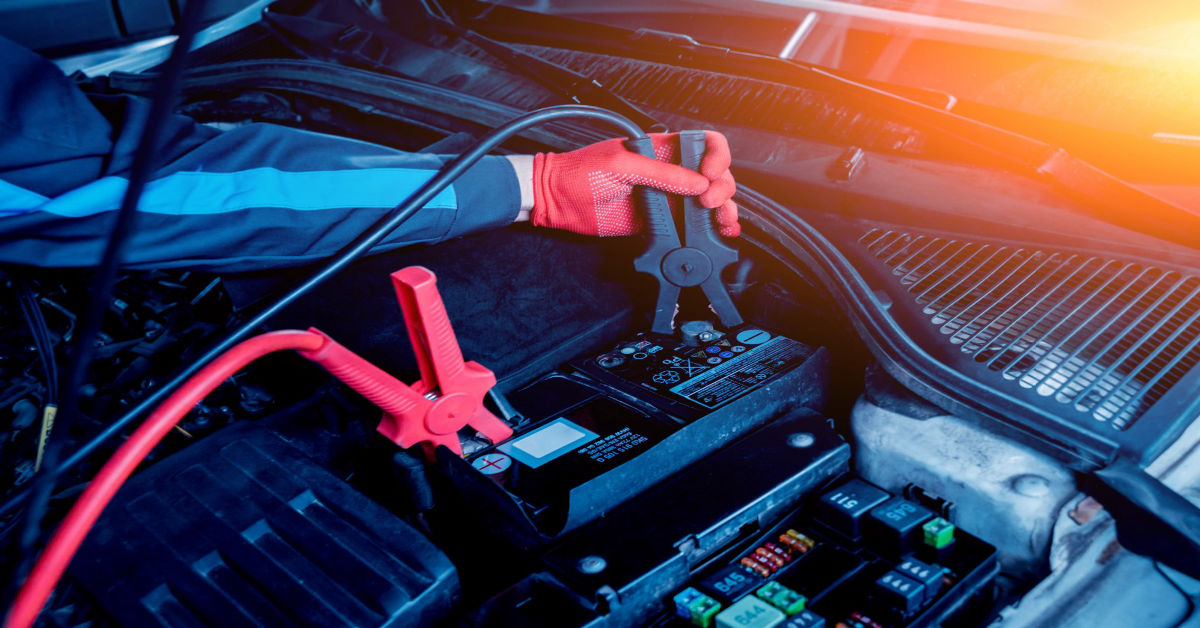A dead car battery doesn’t just stall your vehicle—it can stall your entire day. One minute you’re ready to hit the road and the next you’re stranded in a driveway, parking lot or worse on the side of the road. In these moments, panic often replaces patience, especially if you’re unsure what to do next. That’s why knowing how to jumpstart a car isn’t just useful—it’s empowering. It transforms an unexpected setback into a manageable situation, giving you the confidence to take control rather than relying on roadside assistance or the kindness of strangers.
This section is your gateway to mastering that essential skill. We’ll walk you through the what, why, and how of jumpstarting a car, breaking down the process into simple, clear steps that anyone can follow. You’ll learn what tools you need, the safest way to connect jumper cables, and how to avoid common mistakes that could damage your vehicle—or worse, put you at risk. More than just a tutorial, this guide prepares you to act with clarity and confidence when it counts the most, turning a potential crisis into just another bump in the road.
Understanding the Basics of a Dead Battery
This part explains what a car battery does. It provides power to start the engine and supports other electrical systems like headlights, dashboard electronics, and onboard computers. When it loses its charge due to age, temperature, or electrical drain, the car becomes unresponsive. Understanding this helps readers make sense of why jumpstarting is needed and how it helps restore function.
Causes of a Dead Car Battery
Readers will learn why batteries fail unexpectedly. Common causes like accidentally leaving headlights on, harsh temperatures that reduce battery performance, or an alternator that isn’t charging correctly are discussed. This insight not only prepares readers for a jumpstart but also educates them on how to avoid future problems.
Signs Your Battery Needs a Jumpstart
This section teaches how to recognize warning signs before the battery completely dies. These include the car cranking slowly, dim lights, and unresponsive electronics. It helps readers determine whether a jumpstart is appropriate or if deeper mechanical issues are at play.
Tools You Need to Jumpstart a Car
Before attempting to jumpstart, the right equipment is essential. This section gives a detailed list:
- Jumper cables: Strong enough (at least 10-gauge) and long enough (12–20 feet).
- A second vehicle: With a healthy battery.
- Gloves and eye protection: For safety.
- Vehicle manuals: For locating the battery or understanding fuse systems.
This helps readers feel prepared and safe.
Safety Precautions Before You Begin
Jumpstarting a car carries electrical risks if done carelessly. This part explains essential safety steps:
- Ensure both vehicles are off and secured.
- Keep metal objects (rings, watches) away from the battery.
- Work in a ventilated space to prevent gas accumulation from the battery.
Safety education helps prevent injuries or further damage.
Step-by-Step Guide to Jumpstarting a Car
This is the heart of the article. Each step is explained clearly and in logical order:
- Park cars correctly and turn off all systems.
- Open hoods and locate battery terminals.
- Connect red clamp to the dead car’s positive terminal.
- Attach the other red clamp to the good car’s positive terminal.
- Connect the black clamp to the good battery’s negative terminal.
- Attach the final black clamp to an unpainted metal part on the dead car (never on the battery itself).
- Start the working car and wait a few minutes.
- Try starting the dead car.
- Let it run and remove cables in reverse order.
Each step reinforces safety and efficiency.
How to Position the Vehicles Safely
Improper positioning can make cables stretch or cause sparks. This section advises on:
- Placing vehicles close enough for the cables to reach.
- Ensuring no body parts touch.
- Turning off all accessories to reduce power load during the process.
This eliminates guesswork for first-timers.
Identifying Positive and Negative Terminals
Misidentifying terminals is one of the most common and dangerous mistakes. This part educates users on battery markings:
- Positive (+): Usually red or marked with a plus.
- Negative (-): Usually black or marked with a minus.
Photos or diagrams can be added later if needed.
Connecting Jumper Cables Correctly
This section emphasizes the correct sequence and technique for connecting cables. Reversing this can damage electronics or spark fires. It also explains:
- Why grounding the black cable on a metal part of the dead car prevents sparks.
- What to double-check before starting the vehicles.
Readers learn the correct order for connection and disconnection.
What to Do After Jumpstarting the Car
Once the car is running, the battery needs time to recharge. This section explains:
- How long to leave it idling (15–30 minutes).
- Why you should avoid turning off the engine immediately.
- How to drive the car for a period to recharge the battery fully.
It helps avoid repeat failure.
What If the Car Still Won’t Start
Sometimes, even after doing everything right, the car refuses to start. This part offers troubleshooting advice:
- Rechecking clamp connections
- Trying a different ground point
- Letting the working vehicle charge the dead one longer
- Contacting roadside assistance if needed
It gives readers next steps and avoids panic How to Jumpstart a Car.
When to Replace the Car Battery
If you need frequent jumpstarts, the battery likely can’t hold a charge anymore. This section outlines signs of permanent failure:
- Old age (3–5 years)
- Swollen or cracked case
- Visible corrosion
- Car dies quickly after starting
This teaches How to Jumpstart a Car and invest in a new battery.
Tips to Prevent a Dead Battery in the Future
This section provides actionable habits to extend battery life:
- Turn off lights and accessories when the engine isn’t running
- Avoid too many short trips
- Clean corrosion from terminals
- Drive regularly
- Use a trickle charger for infrequently driven vehicles
These tips offer long-term value and prevention.
Essential Information on Jumpstarting a Car
| Category | Details |
| Common Tools | Jumper cables, gloves, working car |
| Ideal Cable Length | 12–20 feet |
| Cable Gauge | 10-gauge or better |
| Vehicle Positioning | Close but not touching |
| Positive Terminal | Marked with “+”, usually red |
| Negative Terminal | Marked with “-“, usually black |
| Safe Ground Point | Engine block or metal frame |
| Pre-Check | Inspect for cracks or leaks |
| Battery Life Span | 3 to 5 years |
| Charge Time After Jump | 15–30 minutes drive time |
| Signs of Bad Battery | Slow crank, dim lights, frequent jumps |
| Post-Jump Tip | Remove cables in reverse order |
| Maintenance Tip | Clean terminals regularly |
| Risk in Cold Weather | Increased battery drain |
| Alternative Option | Portable jump starter |
Conclusion
The conclusion wraps up the guide with a positive tone and actionable takeaway. It reminds readers:
- Jumpstarting is a simple skill with life-saving implications.
- With knowledge, preparation, and the right tools, they can handle battery issues confidently and How to Jumpstart a Car.
- Preventive maintenance reduces stress and saves time.
It also encourages them to share the article or bookmark it for future emergencies.
FAQ
This section anticipates common concerns and provides reassurance:
- Can I jumpstart in the rain? (Yes, if done properly)
- What if the battery is completely dead? (May need a replacement)
- How often should I check my battery? (Every 6 months)
- Does jumpstarting damage the battery? (Not usually)
- Can I use a portable jump starter? (Yes, and it’s recommended)







